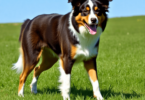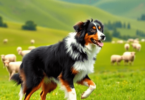Understanding Australian Cattle Dog Health Issues and Lifespan
The Australian Cattle Dog, also known as the Blue Heeler, is a lively breed developed in Australia for herding cattle. These medium-sized dogs typically weigh between 35-50 pounds and are known for their intelligence, loyalty, and strong work ethic. With their unique blue or red speckled coat and sturdy build, they are not only beautiful but also extremely active.
As an owner, it’s important to understand the health issues that are specific to this breed. Common problems such as Blue Heeler health issues can greatly affect your dog’s quality of life. By being aware of these issues, you can detect them early on and ensure that your furry friend stays healthy and happy.
In this article, we will discuss the common health problems that Australian Cattle Dogs may face, including genetic predispositions to joint issues and eye problems. We will also explore prevention strategies such as regular veterinary check-ups and lifestyle changes that can improve the Australian Cattle Dog lifespan.

1. Common Health Issues in Australian Cattle Dogs
1.1 Hip Dysplasia
Hip dysplasia is a common concern among Australian Cattle Dogs, also affectionately known as Blue Heelers. This genetic condition occurs when the hip joint does not fit snugly into the hip socket. The result? Painful joints and mobility issues that can hinder your dog’s active lifestyle.
Causes of Hip Dysplasia
Several factors contribute to the development of hip dysplasia in Blue Heelers:
- Genetics: A hereditary predisposition makes certain bloodlines more susceptible.
- Rapid Growth: Excessive weight during puppyhood can place undue stress on developing joints.
- Exercise: While activity is crucial for this energetic breed, over-exercising young dogs may exacerbate joint issues.
Symptoms and Diagnosis
Detecting hip dysplasia early can make all the difference. Keep an eye out for these symptoms:
- Difficulty Rising: Struggling to stand after lying down.
- Limping or Favoring One Leg: Noticeable shifts in gait.
- Decreased Activity: Reluctance to engage in play or exercise.
Veterinarians typically diagnose hip dysplasia through:
- Physical Examination: A thorough check-up focusing on joint movement and pain response.
- X-Rays: Imaging helps visualize the hip joint’s structure, confirming any abnormalities.
Treatment Options and Preventive Measures
If your Blue Heeler is diagnosed with hip dysplasia, don’t fret! Various treatment options are available:
- Weight Management: Maintaining a healthy weight reduces strain on joints.
- Pain Relief Medications: Anti-inflammatories can help manage discomfort.
- Surgery: In severe cases, surgical interventions like hip replacement may be necessary.
Preventing hip dysplasia is essential for long-term health. Consider these strategies:
- Balanced Diet: Provide high-quality dog food tailored to your dog’s age and size to ensure proper growth without excessive weight gain.
- Regular Exercise: Engage in appropriate exercise routines to keep your Blue Heeler fit, avoiding high-impact activities during developmental stages.
Awareness of Australian Cattle Dog health issues like hip dysplasia empowers owners to take proactive steps in safeguarding their furry friends’ well-being.

1.2 Elbow Dysplasia
Elbow dysplasia is a common health issue in Australian Cattle Dogs and a significant concern for Blue Heelers. This condition occurs when the elbow joint doesn’t develop properly, resulting in pain and difficulty moving. Genetic factors play a major role in this problem, making it important for dog owners to be aware.
Signs to Watch For:
- Limping or favoring one leg
- Difficulty in rising after resting
- Stiffness after exercise
- Reluctance to engage in physical activities
Early detection is crucial. If you notice any of these symptoms, consult your veterinarian promptly. Diagnostic methods include physical examinations and imaging techniques like X-rays, which help confirm the presence of elbow dysplasia.
Treatment options vary depending on the severity of the condition. They can include conservative approaches such as weight management and physical therapy, or surgical interventions in more severe cases. Preventive measures are also important for Blue Heeler health; responsible breeding practices can help reduce the risk of genetic predispositions.
Regular check-ups with your vet are essential for early intervention and ensuring your furry friend stays active, which is vital for their overall well-being. By taking proactive steps, you can help secure a long and happy life for your beloved Australian Cattle Dog.
1.3 Progressive Retinal Atrophy (PRA)
Progressive Retinal Atrophy, commonly known as PRA, is a genetic health issue that can affect Australian Cattle Dogs, also known as Blue Heelers. This condition involves the gradual degeneration of the retina, leading to vision loss and potentially blindness. Understanding PRA is essential for any responsible dog owner.
- Night blindness: Difficulty seeing in low-light conditions
- Dilated pupils: Enlarged pupils that don’t respond well to light
- Loss of interest in activities requiring vision: Avoidance of play or walks in dim settings
- Bumping into objects: Increased clumsiness, especially in unfamiliar environments
Early detection plays a crucial role in managing PRA. Regular veterinary check-ups can help identify signs before they become severe. While there is currently no cure for this condition, supportive care can enhance the quality of life for affected dogs.
Management strategies include:
- Providing a consistent home environment to minimize anxiety
- Using tactile cues and voice commands to guide your dog
- Ensuring safe spaces free from obstacles
By being vigilant about these Blue Heeler health problems, owners can help their dogs adapt to changes and maintain a fulfilling lifestyle despite vision challenges.
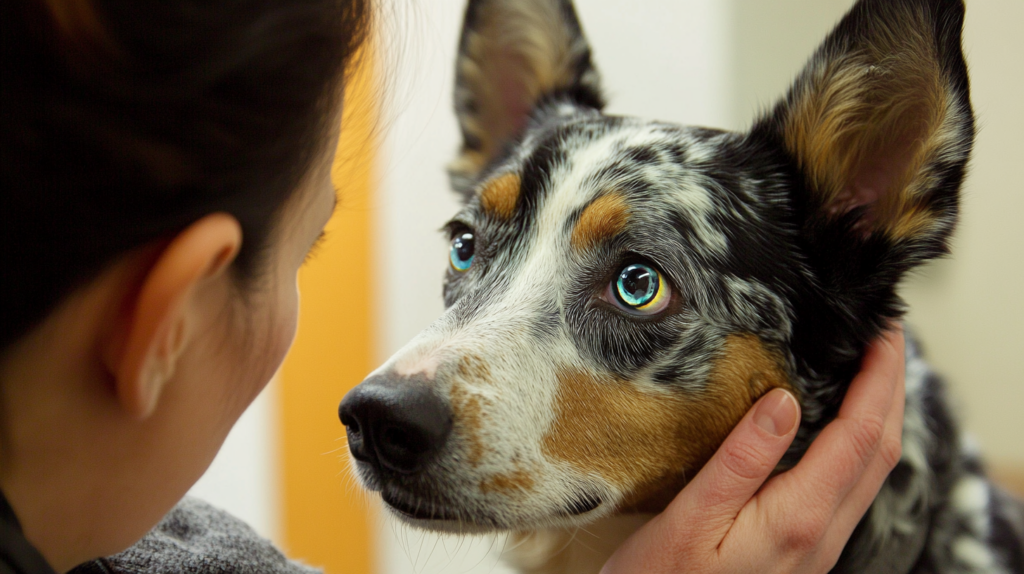
1.4 Deafness
Deafness is a significant concern for Australian Cattle Dogs, often caused by genetic factors. This breed, known for its intelligence and strong work ethic, may carry genes that make them more susceptible to hearing loss. Understanding this condition is essential for owners who want to keep their dogs healthy and improve their quality of life.
Identifying Deafness in Blue Heelers
Recognizing signs of deafness can be subtle yet crucial. Here are some indicators:
- Lack of response to sounds such as clapping or calling their name.
- Startling easily when touched unexpectedly.
- Sleeping more soundly than other dogs, indicating they might not hear household noises.
To confirm suspected hearing loss, BAER (Brainstem Auditory Evoked Response) testing is an effective method. This non-invasive test measures the brain’s response to sound stimuli, providing clear results regarding your pup’s hearing capability.
Early detection plays a significant role in managing this condition. Owners should consider regular screenings, especially for puppies from lines known to produce deafness. By staying informed about Australian Cattle Dog health issues, including Blue Heeler health problems related to deafness, proactive measures can enhance the well-being and longevity of these energetic companions.
1.5 Von Willebrand’s Disease
Von Willebrand’s Disease (vWD) is a bleeding disorder that can significantly impact the health of Australian Cattle Dogs, commonly known as Blue Heelers. This condition arises from a deficiency in von Willebrand factor, a protein essential for blood clotting. When this protein is lacking, affected dogs may experience excessive bleeding from minor injuries or during surgical procedures.
Genetic Factors
- vWD is hereditary, meaning it can be passed down through generations. Certain bloodlines of Blue Heelers are more prone to this condition due to genetic predispositions.
- Responsible breeding practices should include screening for vWD to minimize its occurrence within the breed. This could involve utilizing resources from the Riney Canine Health Center which provide valuable information on genetic diseases in dogs.
Importance of Screening
- Early detection plays a crucial role in managing Von Willebrand’s Disease effectively.
- Breeders should conduct blood tests to identify potential carriers before mating. This proactive approach helps ensure healthier puppies and reduces the risk of this bleeding disorder.
By understanding Von Willebrand’s Disease and its genetic implications, owners can take steps to safeguard their Blue Heelers’ health. Awareness and preventative measures contribute to the longevity and vitality of these remarkable dogs.
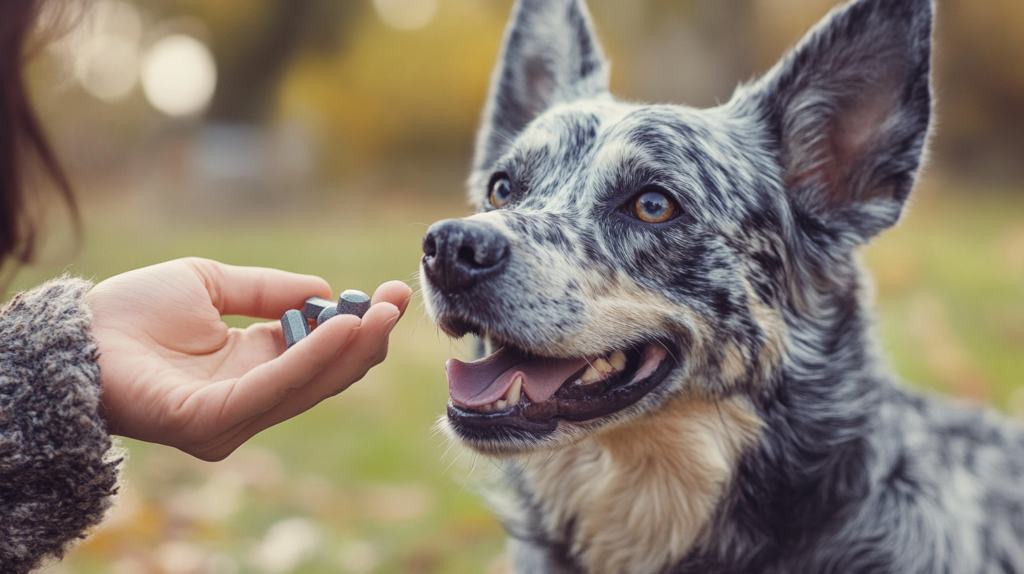
1.6 Cataracts and Glaucoma
Australian Cattle Dogs are not just known for their intelligence and work ethic; they can also face eye conditions like cataracts and glaucoma. These issues can significantly impact their quality of life if left untreated.
Common Eye Conditions
- Cataracts: A condition where the lens of the eye becomes cloudy, leading to vision impairment.
- Glaucoma: This involves increased pressure within the eye, which can damage the optic nerve and result in blindness.
Symptoms to Watch For
Identifying these issues early can make a world of difference. Keep an eye out for:
- Cloudy or opaque eyes (cataracts)
- Redness or swelling in the eyes (glaucoma)
- Excessive tearing or squinting
- Changes in behavior, such as bumping into objects
Treatment Options
Treatment varies based on the severity of the condition:
- Cataracts: Surgical removal of cataracts is often successful and can restore vision.
- Glaucoma: Medications may help manage pressure, while severe cases might require surgical intervention.
Regular veterinary check-ups play a crucial role in identifying these Australian Cattle Dog health issues early. Prompt action leads to better outcomes, ensuring your Blue Heeler enjoys a long and healthy life.
1.7 Hypothyroidism
Hypothyroidism is a disorder that affects the glands and can have a significant impact on the overall health of Australian Cattle Dogs, also known as Blue Heelers. This condition occurs when the thyroid gland does not produce enough hormones, leading to various health problems.
- Weight Gain: Despite a normal or decreased appetite.
- Lethargy: Reduced energy levels and less enthusiasm for activity.
- Skin Problems: Dry, flaky skin and hair loss.
- Cold Sensitivity: Increased sensitivity to cold temperatures.
It is crucial to recognize these symptoms early on in order to effectively manage hypothyroidism. Diagnosis usually involves blood tests to measure thyroid hormone levels.
Treatment options include daily medication to replace the missing hormones, which can help restore normal function. Regular check-ups with the veterinarian are essential for monitoring thyroid levels and adjusting medication as necessary.

By staying alert to these symptoms and ensuring regular visits to the vet, you can help your Blue Heeler live a happier and healthier life despite potential health challenges. Taking proactive steps is vital in effectively addressing health issues in Australian Cattle Dogs.
1.8 Dental Disease
Dental disease is a significant concern among Australian Cattle Dogs, often manifesting as periodontal disease. This condition arises when plaque builds up on the teeth, leading to inflammation of the gums and potential tooth loss.
Prevalence of Periodontal Disease:
- Periodontal disease is notably common in Blue Heelers, primarily due to their unique anatomy and lifestyle.
- Regular monitoring of dental health can prevent severe complications.
Importance of Regular Dental Care:
Establishing a consistent dental hygiene routine is crucial. This includes:
- Brushing your dog’s teeth: Aim for at least two to three times a week.
- Providing dental chews: These can help reduce plaque buildup and keep teeth clean.
- Scheduling professional cleanings: A veterinarian can assess your dog’s oral health and perform thorough cleanings as needed.
Regular dental care not only enhances the overall health of your Australian Cattle Dog but also contributes to their longevity. Just like with other Australian Cattle Dog health issues, early detection and prevention are key. Keeping an eye on your pup’s pearly whites will ensure they remain happy, healthy, and ready for action!
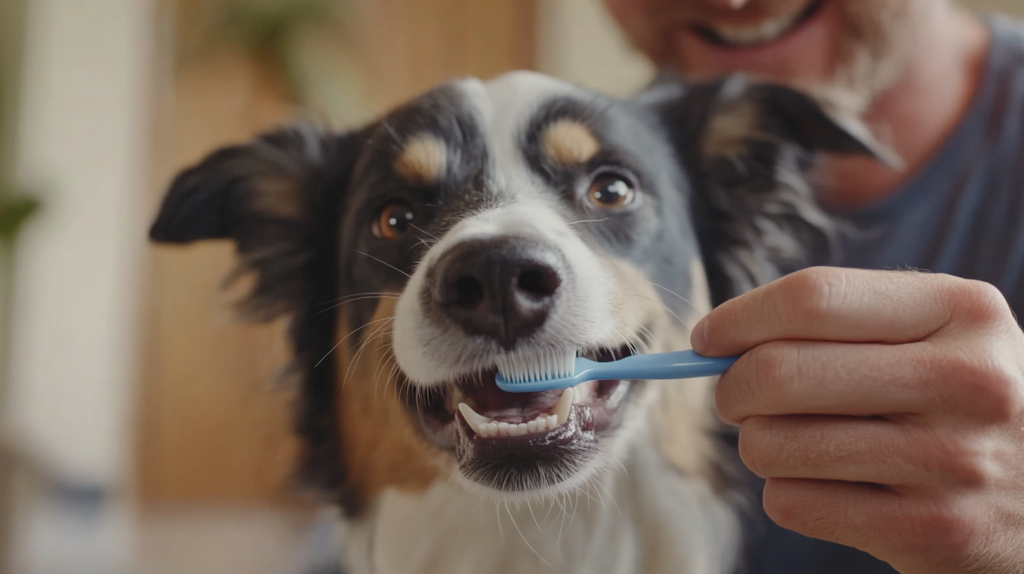
1.9 Obesity
Obesity is a significant concern among Australian Cattle Dogs, often influenced by their genetics and lifestyle. These intelligent and energetic pups can easily fall prey to weight gain if not properly managed. The risks associated with obesity in this breed include:
- Joint Problems: Excess weight exerts additional stress on joints, exacerbating issues like hip dysplasia and elbow dysplasia.
- Heart Disease: Carrying extra pounds can lead to cardiovascular complications, affecting overall health.
- Decreased Lifespan: Obese dogs may face a shorter life span due to related health problems.
Prevention is key when it comes to ensuring your Blue Heeler maintains a healthy weight. Consider these tailored strategies:
Diet Management
- Opt for high-quality dog food that meets their nutritional needs.
- Control portion sizes to prevent overeating; measuring food can be helpful.
Exercise Routines
- Commit to at least two hours of vigorous activity daily, such as herding games, running, or agility training.
- Engage in mental stimulation activities like puzzle toys or obedience training to keep their minds sharp.
Being proactive about weight management can help mitigate various Australian Cattle Dog health issues while promoting a happy, active lifestyle.
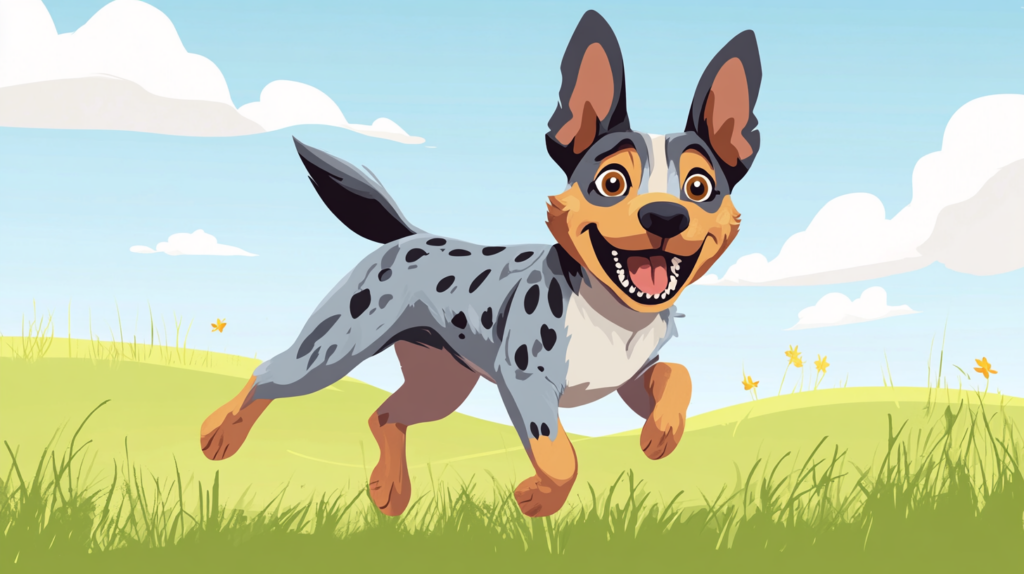
2 Prevention Strategies for Health Issues
2.1 Routine Veterinary Check-Ups
Regular veterinary visits play an essential role in maintaining the optimal well-being of your Blue Heeler. These check-ups are invaluable for the early detection and intervention of potential health issues. Here’s what you need to know:
Why Routine Check-Ups Matter
- Regular examinations allow for the monitoring of your dog’s health over time. This proactive approach can identify emerging medical conditions that may otherwise go unnoticed until they’ve progressed.
- Vets can perform essential screenings, vaccinations, and dental cleanings during these visits, ensuring a comprehensive look at your pup’s health.
Recommended Frequency of Visits
- Puppies (0-1 year): Monthly check-ups are ideal for keeping up with vaccinations and assessing growth.
- Adult Dogs (1-7 years): An annual visit is typically sufficient, but semi-annual check-ups can be beneficial, especially for active breeds like Blue Heelers prone to joint issues.
- Senior Dogs (7+ years): Twice a year is recommended as older dogs may develop age-related conditions that require more frequent monitoring.
What to Expect During a Visit
- A thorough physical examination assessing weight, coat quality, dental health, and joint mobility.
- Recommendations for preventive measures against common ailments affecting Blue Heelers, including dietary adjustments or exercise plans tailored to their specific needs.
- Discussion about any behavioral changes or concerns you may have noticed since the last visit.
Veterinary professionals not only provide crucial medical care but also serve as trusted partners in ensuring your Australian Cattle Dog thrives. Establishing a strong relationship with your vet helps facilitate open communication about Blue Heeler health: common issues and prevention strategies.
Incorporating routine veterinary check-ups into your pet care regimen significantly contributes to the longevity and quality of life for your furry friend. Prioritizing these visits lays a solid foundation for both physical and emotional well-being.
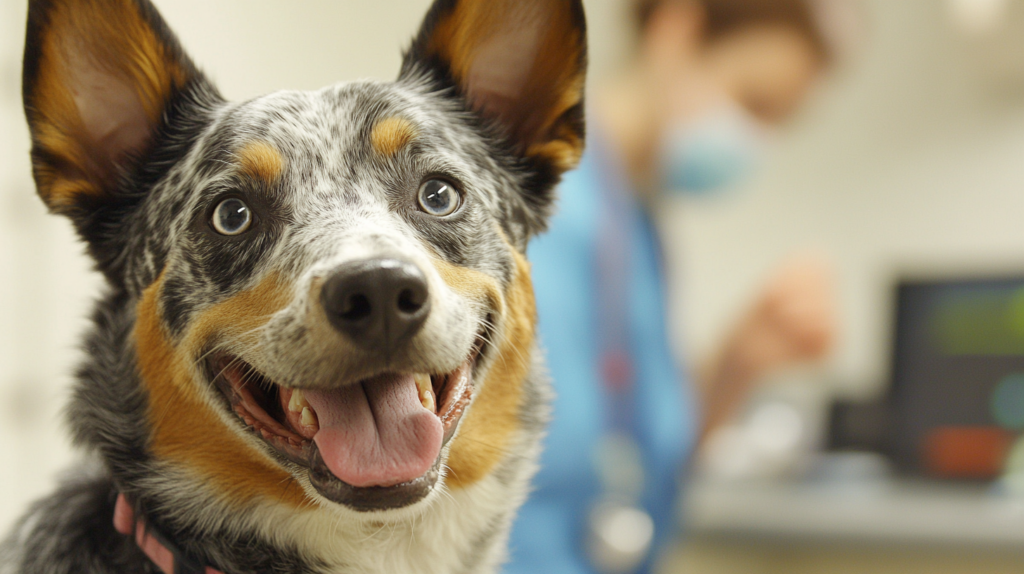
2.2 Nutrition for Australian Cattle Dogs
Nutrition plays a crucial role in keeping Australian Cattle Dogs healthy and preventing potential health issues as they age. It’s important to provide them with a balanced diet that meets their specific needs. Here are some key things to consider:
1. Age-Specific Needs
Nutritional requirements vary based on growth stages, from puppies to adults. Young Blue Heelers require higher protein content to support their growth, whereas adult dogs benefit from a balanced diet that helps maintain muscle mass and energy levels.
2. Portion Sizes
It’s important to monitor portion sizes to prevent obesity-related complications later down the line. Use guidelines provided by reputable dog food brands to ensure your pup receives appropriate amounts based on their weight and activity level.
3. High-Quality Dog Food
Invest in high-quality dog food brands that are recognized by industry professionals. These foods typically contain essential nutrients and avoid fillers that could lead to weight gain or other health issues.
4. Preventive Measures Against Common Ailments
Proper nutrition can help mitigate risks associated with common ailments affecting Blue Heelers, including obesity, which can exacerbate joint problems and overall health issues.
Regular veterinary check-ups complement these nutritional efforts, ensuring your dog’s diet aligns with their health status and physical condition. Keeping a close eye on your furry friend’s dietary habits supports their well-being and longevity.
2.3 Exercise Requirements
Australian Cattle Dogs, or Blue Heelers, thrive on activity. Their energetic nature and herding background mean they require a minimum of two hours of exercise daily. This not only keeps them physically fit but also contributes to their mental well-being.
Recommended Exercise Routines
- Daily Walks: Long walks provide both physical exercise and mental stimulation. Aim for at least one hour split into two sessions.
- Fetch and Retrieval Games: Engaging in these activities helps channel their natural herding instincts.
- Agility Training: Setting up an obstacle course can be a fun way to keep your Blue Heeler active while enhancing their coordination.
- Swimming: If accessible, swimming is a great low-impact exercise that helps build strength without stressing joints.
The benefits of regular physical activity include:
- Improved cardiovascular health
- Weight management, reducing the risk of obesity-related issues
- Enhanced mood and reduction of behavioral problems
Adopting a proactive approach towards safeguarding against potential health concerns throughout their lifespan is essential. Regular exercise complements routine veterinary check-ups for maintaining optimal well-being. Keeping an eye on Blue Heeler health not only prevents common ailments but also enriches the bond you share with your furry friend.
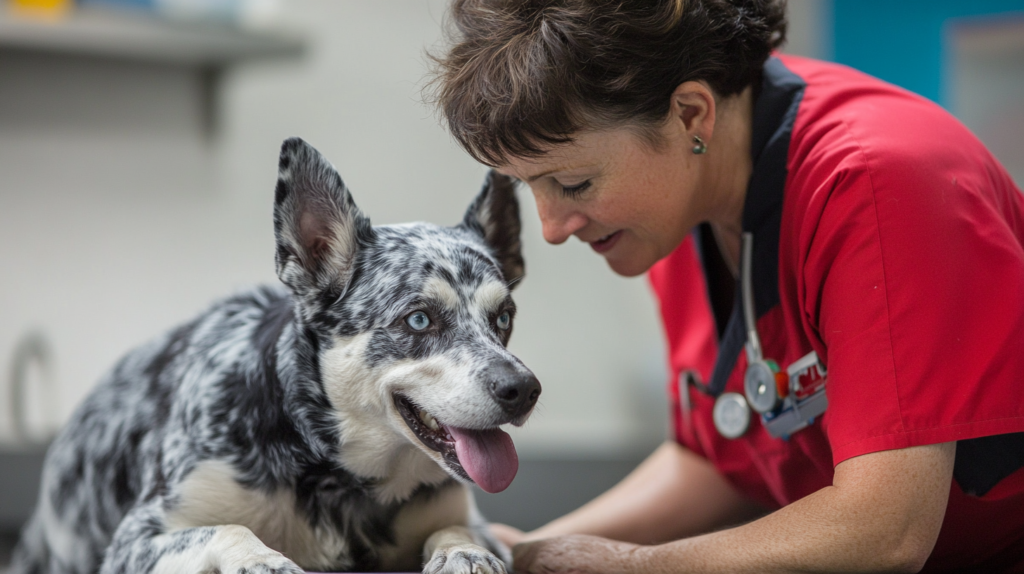
2.4 Grooming Practices
Grooming Australian Cattle Dogs is essential for maintaining their health and happiness. Regular grooming routines not only keep their coat looking fabulous but also help manage shedding and promote skin health. Here’s how to make the most of your grooming sessions:
Frequency
Aim for a grooming session at least once a week. During shedding seasons, increase this to several times a week.
Tools
- Slicker Brushes: Perfect for removing loose fur and preventing matting.
- Undercoat Rakes: Effective for dealing with the dense undercoat that Blue Heelers possess.
- Nail Clippers: Keep those nails trimmed to avoid discomfort or injury.
Techniques
- Start by brushing against the grain of the coat, then smooth it down in the direction of growth.
- Check for any signs of skin irritation or parasites during grooming.
- A bath every few months can help maintain cleanliness, but be cautious not to over-bathe as it may strip natural oils.
Implementing these preventive measures against common ailments affecting Blue Heelers keeps them healthy and reduces the risk of skin issues. Regular veterinary check-ups further enhance their well-being, ensuring you catch any potential health concerns early on. Embrace proactive grooming practices as part of your Blue Heeler’s routine!
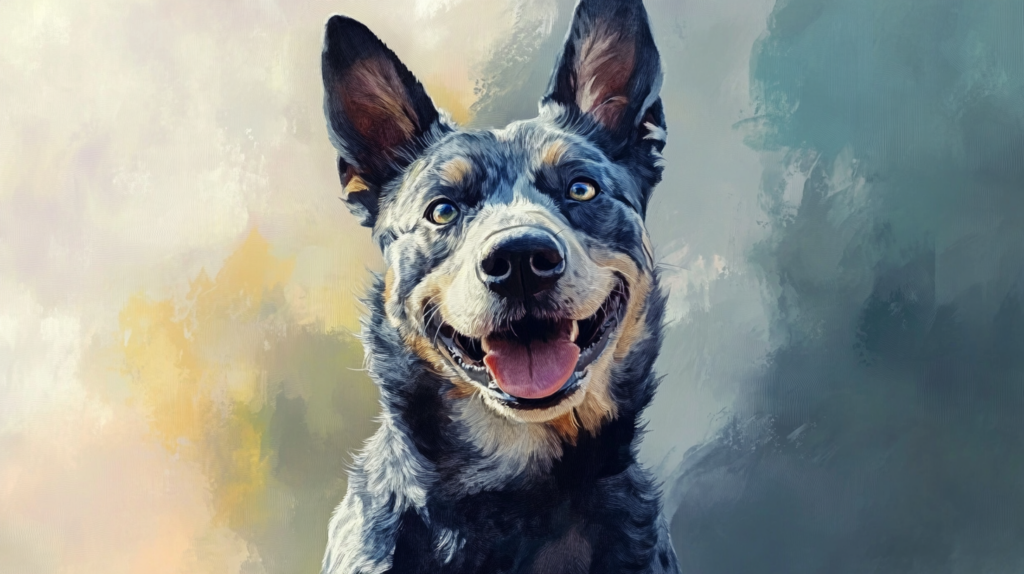
FAQs (Frequently Asked Questions)
What are common health issues in Australian Cattle Dogs?
Australian Cattle Dogs, also known as Blue Heelers, are prone to several health issues including hip dysplasia, elbow dysplasia, progressive retinal atrophy (PRA), deafness, Von Willebrand’s Disease, cataracts, glaucoma, hypothyroidism, dental disease, and obesity. Understanding these conditions is crucial for early detection and prevention.
How can I prevent hip dysplasia in my Blue Heeler?
Preventive measures for hip dysplasia include ensuring a balanced diet to maintain a healthy weight, providing regular exercise to strengthen muscles around the joints, and conducting regular veterinary check-ups for early detection. Genetic screening may also help identify predisposition to this condition.
What are the signs of progressive retinal atrophy (PRA) in Australian Cattle Dogs?
Signs of PRA in Australian Cattle Dogs may include difficulty seeing in low light, a reluctance to navigate dark areas, and changes in behavior such as bumping into objects. Regular eye examinations can help detect PRA early.
How is deafness diagnosed in Blue Heelers?
Deafness in Blue Heelers can be diagnosed through behavioral observations and specialized tests such as BAER (Brainstem Auditory Evoked Response) testing. This test measures the brain’s response to sound stimuli and is essential for confirming hearing ability.
What is Von Willebrand’s Disease and how does it affect Blue Heelers?
Von Willebrand’s Disease is a bleeding disorder that affects the blood’s ability to clot properly. It can lead to excessive bleeding from minor injuries or surgical procedures. Genetic factors contribute to its development, making screening important during breeding programs.
What preventive measures can help combat obesity in Australian Cattle Dogs?
Preventive measures against obesity include providing a balanced diet tailored to the dog’s age and activity level, ensuring regular exercise routines that cater to their energetic nature, and monitoring their weight through regular veterinary check-ups.

